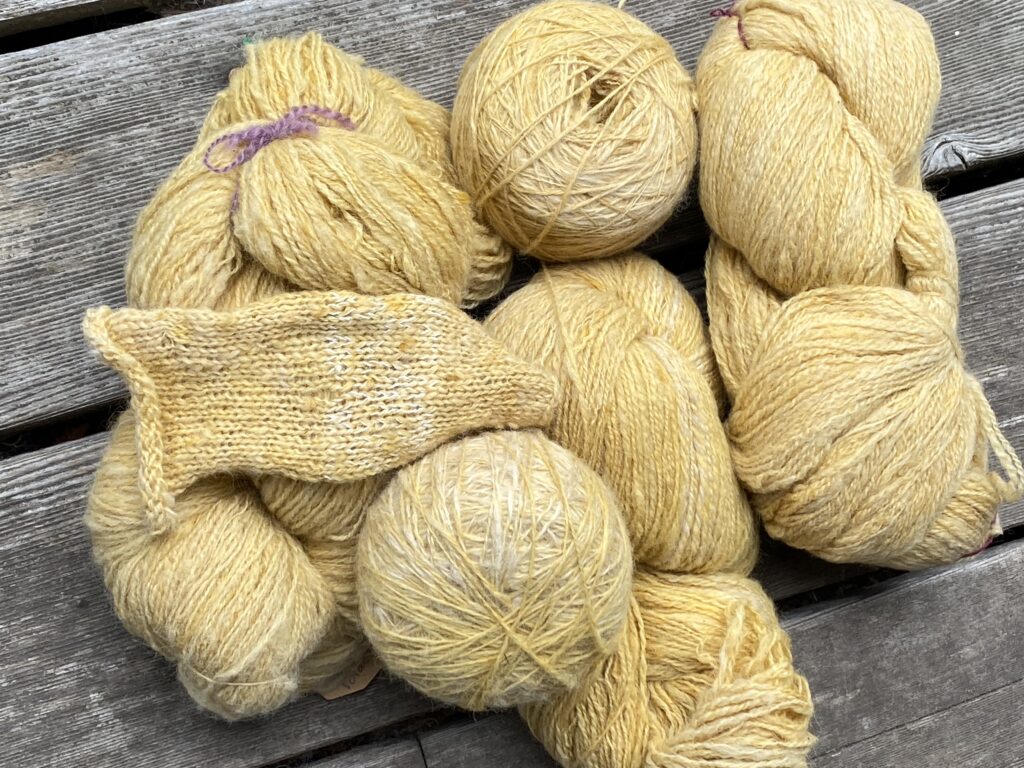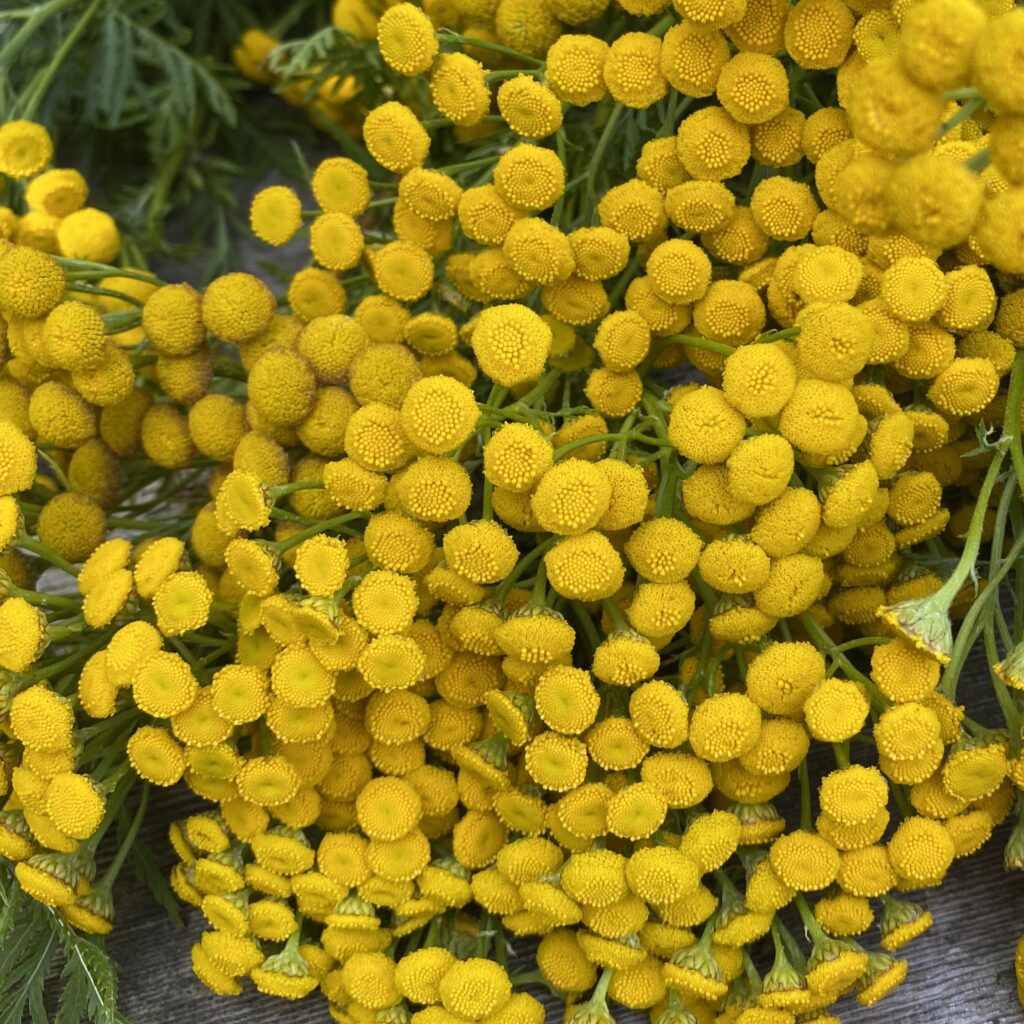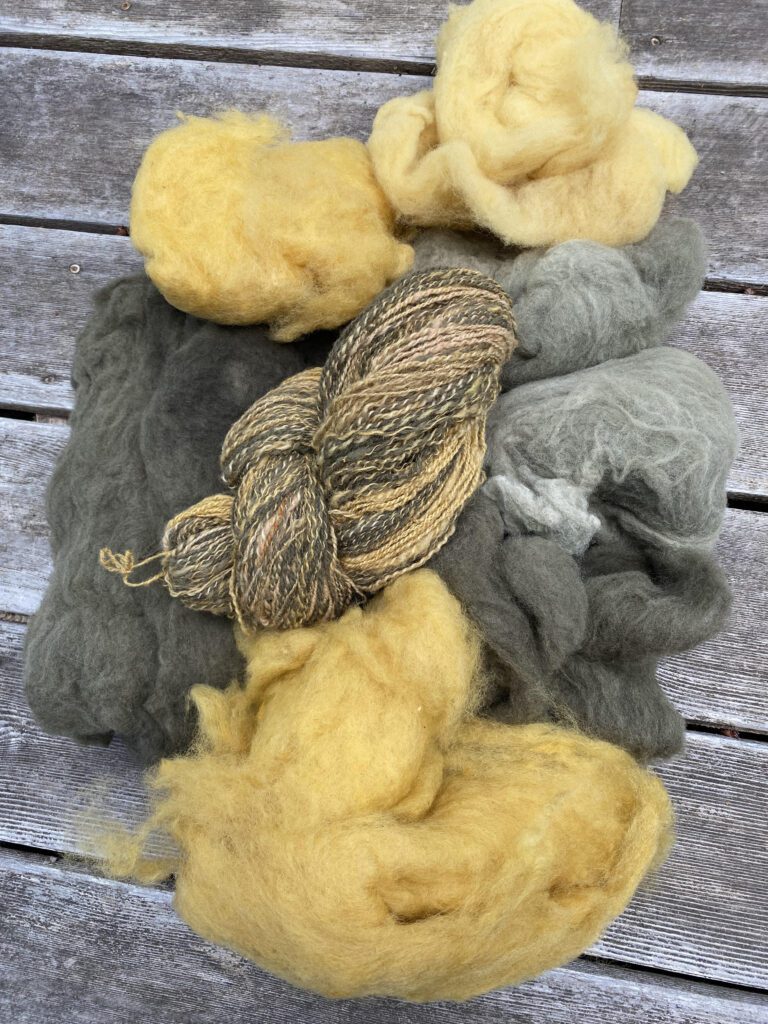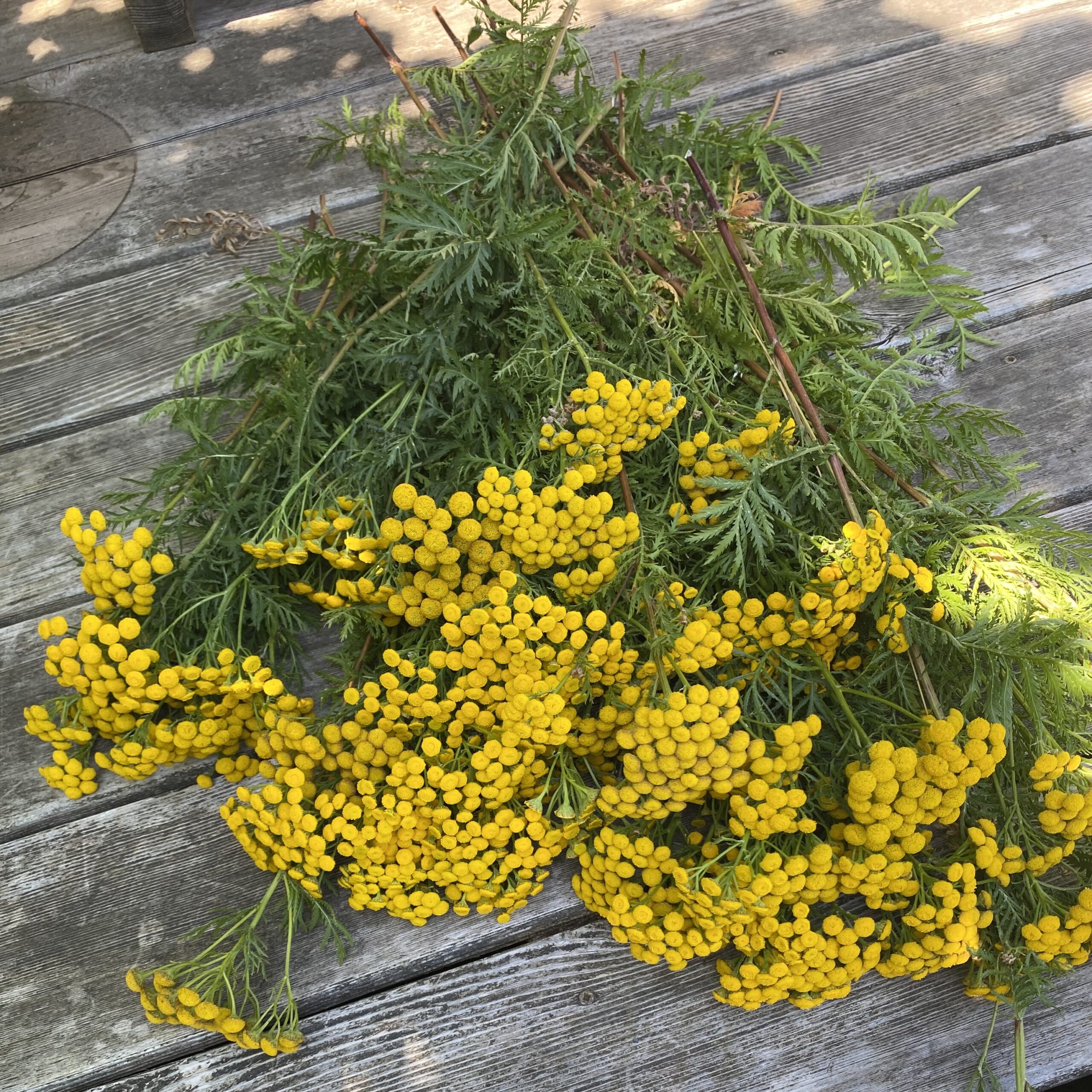While I do love the natural whites, greys, and browns of undyed fibre, sometimes I like to add some colour. In this piece, Amy Crook gives us an overview of how to dye fibre with a common roadside weed – Tansy!
Dyeing with Tansy (Tanacetum vulgare)
Tansy is a strong dye plant that grows prolifically along road sides in July and August. It is considered an invasive plant so you don’t need to worry about safe harvest limits as you would with native species. In fact, harvest lots!
Tansy is one of the strongest light-fast yellow botanical dyes. It has a strong smell, so boil your dye pots outside. Tansy gives a variety of colors depending on which part of the plant and mordant is used:
| Colour | Mordant | Fibre | Part of Plant |
| Greenish yellow | Alum | Wool | Flowers and some leaves |
| Yellow | Alum | Wool | Flowers |
| Dark green | Alum with iron after-dip | Wool | Stems, leaves and flowers |
Drying flowers to use at a later time does not affect the dye vibrancy. My experiments show very little difference in the yellow colors when using dried vs fresh flowers.


The dye process is easy. I harvest tansy flowers when they are bright yellow and fully open. I chop up the flower heads and simmer them (not boil) in plenty of water for about an hour. I leave the dye bath to cool overnight and then strain it several times to remove all plant matter. I place wool mordanted with alum at 5-7% weight of fibre into the cool dye bath and bring it up to a simmer for about an hour. I leave the dye bath to cool overnight. Remove and rinse the wool until the water is clear.
Using an iron mordant or after bath gives a lovely olive green color. You can either add iron to the dye pot as you simmer the tansy plant (I use ferrous sulfate from Maiwa.com) or put your dyed skein in an iron after bath overnight. I use an old enamel pot that has rusted heavily. I leave water in the pot so it will infuse with iron (rust) and be ready to use when I want an iron after bath. Soak the dyed yarn in the iron overnight and rinse until the water is clear.

My next adventure is to try dyeing with tansy on cellulose-based fabric (cotton and linen). I’ll let you know how that goes.

